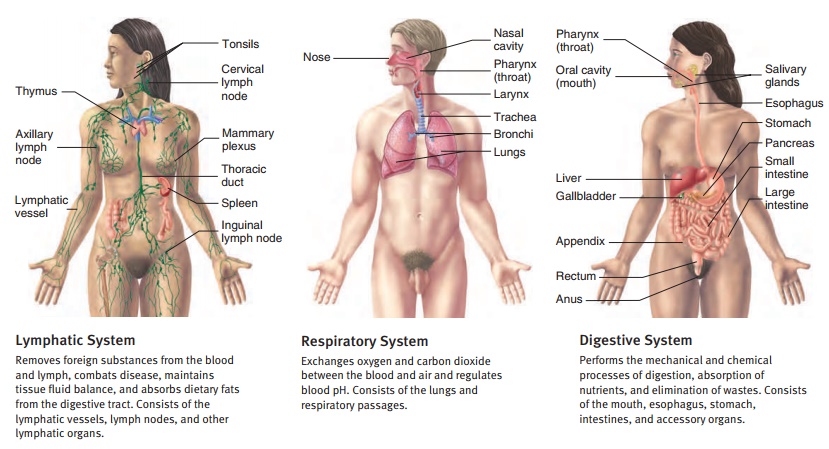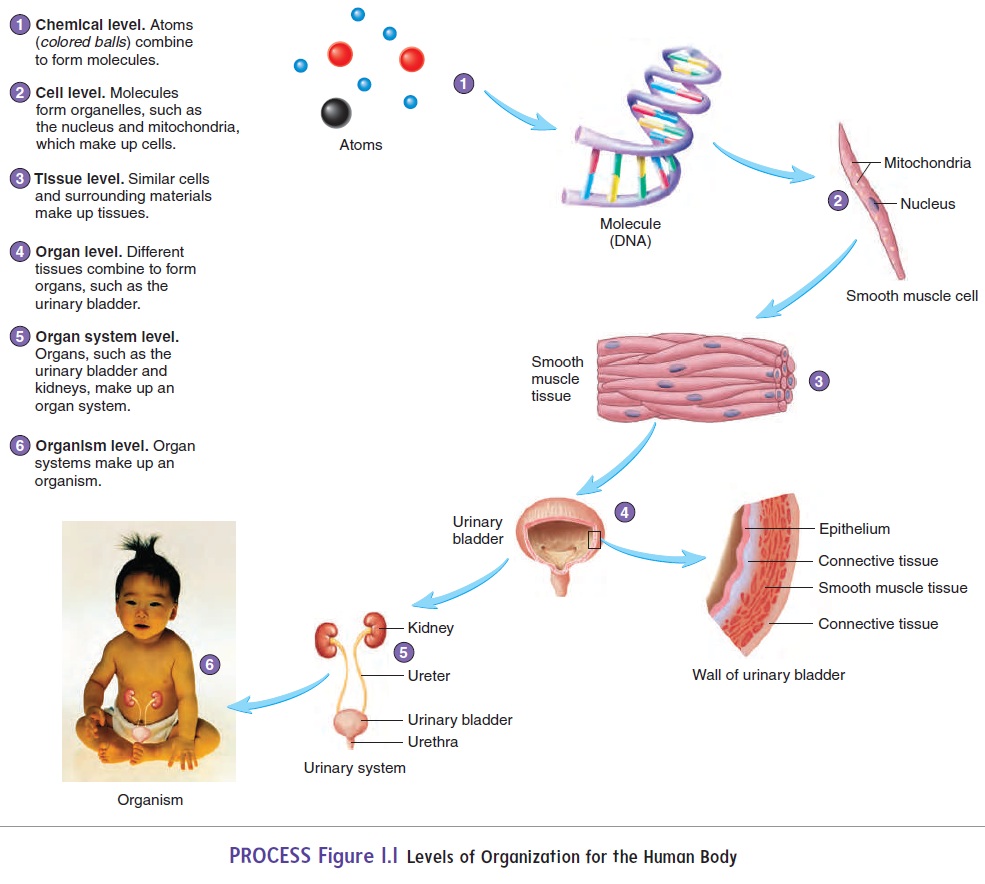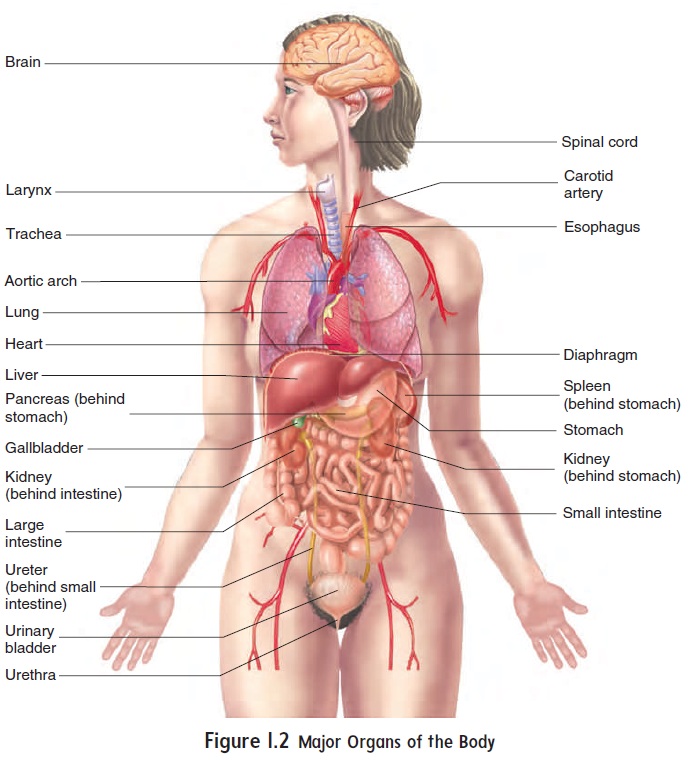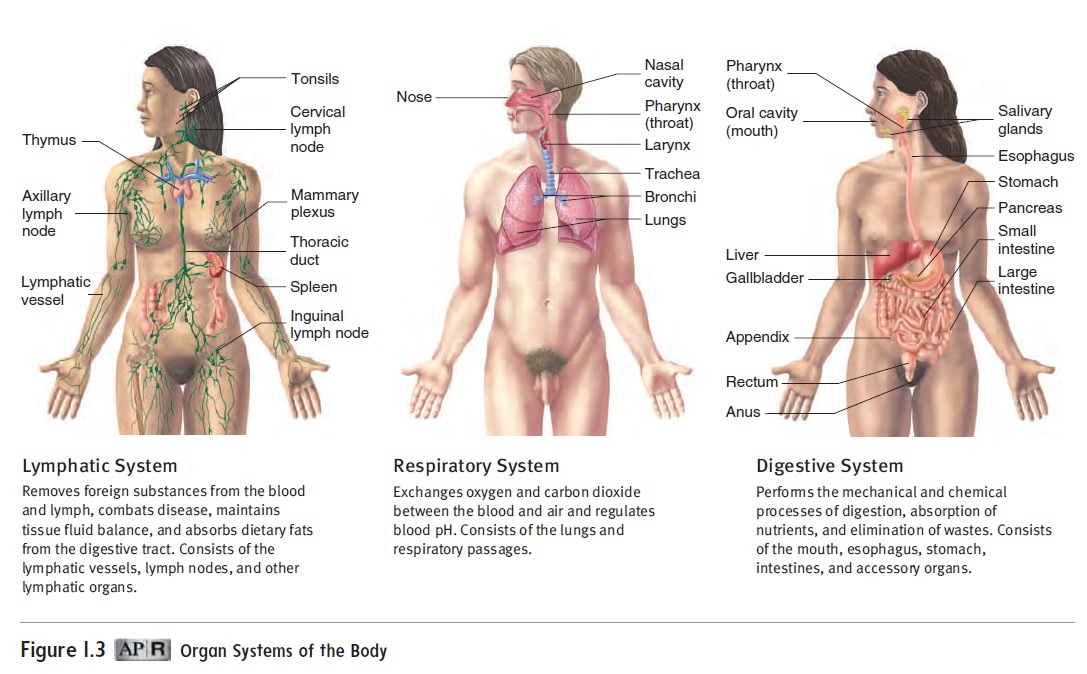Chapter: Essentials of Anatomy and Physiology: The Human Organism
Structural and Functional Organization of the Human Body

STRUCTURAL AND FUNCTIONAL ORGANIZATION OF THE HUMAN BODY
A.Describe the six levels of organization of the body, anddescribe the major characteristics of each level.
B.List the eleven organ systems, identify their components,and describe the major functions of each system.
The body can be studied at six structural levels: chemical, cell, tissue, organ, organ system, and organism (figure 1.1).

Chemical Level
The structural and functional characteristics of all organisms are determined by their chemical makeup. The chemical level of organization involves how atoms, such as hydrogen and carbon, interact and combine into molecules. The function of a molecule is intimately related to its structure. For example, collagen mol-ecules are strong, ropelike fibers that give skin structural strength and flexibility. With old age, the structure of collagen changes, and the skin becomes fragile and more easily torn.
Cell Level
Cells are the basic structural and functional units of organisms, suchas plants and animals. Molecules can combine to form organelles (or′gă-nelz; little organs), which are the small structures that make up some cells. For example, the nucleus contains the cell’s hereditary information, and mitochondria manufacture adenosine triphosphate (ATP), a molecule cells use for a source of energy. Although cell types differ in their structure and function, they have many charac-teristics in common. Knowledge of these characteristics and their variations is essential to a basic understanding of anatomy and physiology.
Tissue Level
A tissue (tish′ū) is a group of similar cells and the materials surround-ing them. The characteristics of the cells and surrounding materials determine the functions of the tissue. The many tissues that make up the body are classified into four primary types: epithelial, con-nective, muscle, and nervous.
Organ Level
An organ (ōr′găn; a tool) is composed of two or more tissue types that together perform one or more common functions. The \urinary bladder, skin, stomach, and heart are examples of organs (figure 1.2).

Organ System Level
An organ system is a group of organs classified as a unit because of a common function or set of functions. For example, the urinary system consists of the kidneys, ureter, urinary bladder, and urethra. The kidneys produce urine, which is transported by the ureters to the urinary bladder, where it is stored until eliminated from the body by passing through the urethra. In this text, we consider eleven major organ systems: integumentary, skeletal, muscular, lymphatic, respiratory, digestive, nervous, endocrine, cardiovascular, urinary, and reproductive (figure 1.3).
The coordinated activity of the organ systems is necessary for normal function. For example, the digestive system takes in and processes food, which is carried by the blood of the cardiovascular system to the cells of the other systems. These cells use the food and produce waste products that are carried by the blood to the kid-neys of the urinary system, which removes waste products from the blood. Because the organ systems are so interrelated, dysfunction in one organ system can have profound effects on other systems. For example, a heart attack can result in inadequate circulation of blood. Consequently, the organs of other systems, such as the brain and kidneys, can malfunction. Throughout this text, Systems Pathology essays consider the interactions of the organ systems.


Organism Level
An organism is any living thing considered as a whole, whether composed of one cell, such as a bacterium, or of trillions of cells, such as a human. The human organism is a complex of organ systems that are mutually dependent on one another (figure 1.3).
Related Topics